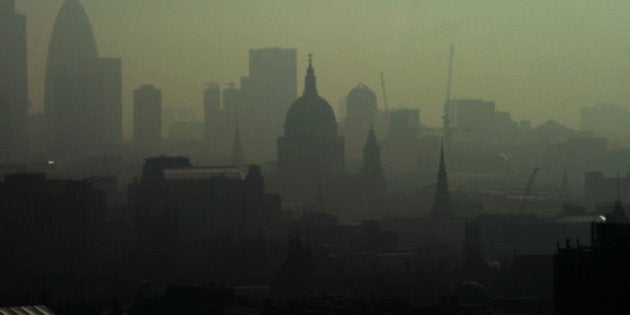
In this series, I will be reviewing best practices in mitigating and adapting to climate change in cities, also known as resilient cities, around the globe, starting with the top 10 cities from my global ranking. Last week I highlighted number 10, Tokyo. Next up, London.
In order for cities to get past the first screen, they had to demonstrate a minimum amount of political commitment and leadership towards resiliency. In the case of London, that included having a published climate action plan (CAP). Like Tokyo, London is a member of the C40 and ICLEI. Additionally, London is also participating in Richard Branson's Carbon War Room Green Capital Global Challenge.
According to CityMayors.com, London actually ranks number one of all cities in my study on density. While debates continue about whether increased density is always a good thing for resiliency, I personally believe that density with smart urban planning and transit is a key strategy for resiliency on a global scale as our population balloons to nine billion. Obviously other factors regarding food security need to be addressed which I did not capture in the 2011 rankings.
And of course London has a fantastic transit system. Aside from having the fourth most rail transit users of any city in my study, London of course gets props for introducing the controversial but bold congestion zone.
The rings placed around the city, with a hefty fee to cross in a vehicle have resulted in a 25 per cent reduction in traffic delays and early on demonstrated a 19 per cent reduction in transit-related GHG emissions in the City.
Besides the GHG reductions, the congestion zone generates increased revenue for public transit and is now serving to encourage greener vehicle purchases by exempting them from paying anything at all.
London also scored high points by being an early mover in adaptation. The Thames Barrier, operational since 1982 is the second largest movable flood barrier in the world. The Barrier "protects 125 square kilometers of central London from flooding caused by tidal surges."
Like all cities, London has plenty of room for improvement. For example, London's GHG emissions per capita are 6.2 tons compared with a low of 2.1 tons/capita for Curitiba and Copenhagen.
Also according to my research, only about 10 per cent of London's electricity comes from renewables, compared to Vancouver which has about 90 per cent clean or renewable electricity. Having said that London is doing many things quite well, and in my study are one of the leaders in embracing adaptation from the Barrier to the integration of adaptation planning into their Climate Action Plan. London, despite some evidence to the contrary, is trying to host the Greenest Olympics ever in 2012.
In the coming weeks and months I will be highlighting the remaining Top 10 cities and best practices from around the globe. In the meantime, to learn more, please join ICLEI's President David Cadman and I for a webinar on resilient cities.